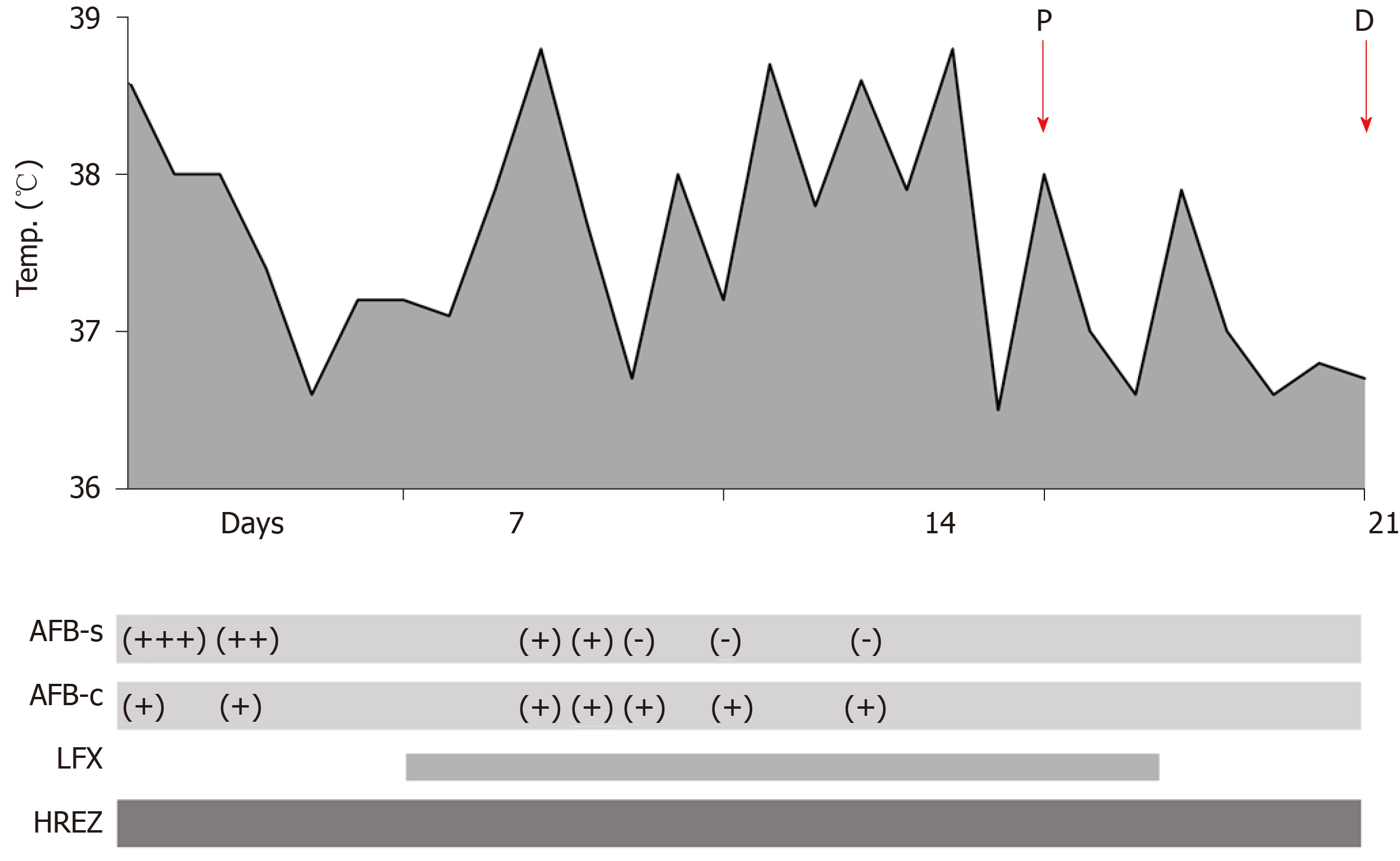Copyright
©The Author(s) 2020.
World J Clin Cases. Feb 6, 2020; 8(3): 546-551
Published online Feb 6, 2020. doi: 10.12998/wjcc.v8.i3.546
Published online Feb 6, 2020. doi: 10.12998/wjcc.v8.i3.546
Figure 2 The patient's fever pattern, sputum acid-fast bacilli results, and anti- tuberculosis medication and the clinical and social decisions made by several authorities during hospitalization.
The patient had a high-spiking fever for three weeks, which normalized after the 25th d. Sputum acid-fast bacilli (AFB) smear tests were grade three plus (3+) positive on admission, two plus (2+) on the 3rd d of hospitalization, one plus (1+) on the 10th and 11th d of hospitalization, and negative on the 12th, 14th, and 17th d of hospitalization. Sputum AFB culture tests were later positive for all the subsequent AFB tests. He received a first-line anti-tuberculosis regimen, consisting of Isoniazid, rifampicin, ethambutol, and pyrazinamide and pyridoxine (vitamin B6). Levofloxacin was administered from the 7th to 23rd d of hospitalization, after a diagnosis of comorbid pneumonia. He was allowed to board a commercial airline aircraft on the 21st d since hospitalization. On the 28th d, he met prerequisite conditions for traveling and boarded a plane back to his native country, India. AFB: Acid-fast bacilli; LFX: Levofloxacin; HREZ: Isoniazid, rifampicin, ethambutol, and pyrazinamide; P: Permission; D: Departure.
- Citation: Jo W, Pak C, Jegal Y, Seo KW. Boarding issue in a commercial flight for patients with cavitary pulmonary tuberculosis: A case report. World J Clin Cases 2020; 8(3): 546-551
- URL: https://www.wjgnet.com/2307-8960/full/v8/i3/546.htm
- DOI: https://dx.doi.org/10.12998/wjcc.v8.i3.546









